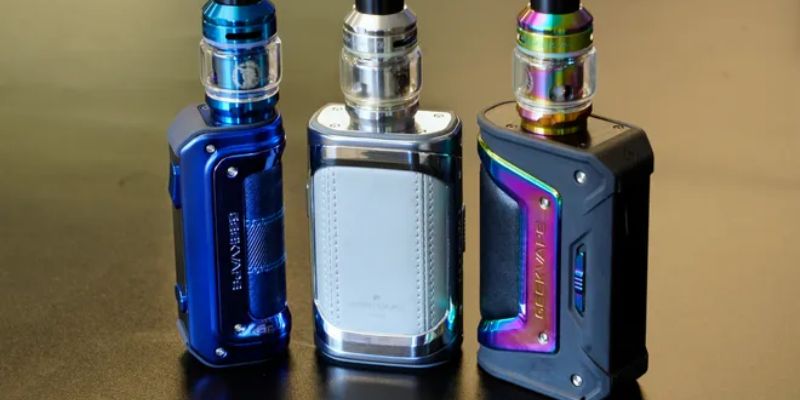Introduction to Electronic Cigarettes Vape
Are you curious about the world of electronic cigarettes, commonly known as vapes? You’re not alone! Vaping has taken the scene by storm, becoming a popular alternative to traditional smoking. Whether you’re considering making the switch or just want to learn more about this trendy phenomenon, you’ve come to the right place.
From flavors that tantalize your taste buds to advanced technology behind each puff, vaping offers an intriguing experience for users. But with so much information out there—both good and bad—it can be overwhelming. That’s why we’ve crafted this guide to provide you with everything you need to know about electronic cigarettes. Let’s dive into the ins and outs of vaping together!
How do E-Cigarettes Work?
E-cigarettes operate on a simple yet effective principle: vaporization. When you inhale, a battery-powered device heats up the e-liquid inside.
This liquid usually contains nicotine, flavorings, and other chemicals. As it heats, the liquid transforms into an aerosol or vapor that users can then inhale.
The heating element is known as an atomizer. It plays a crucial role by converting the e-liquid into vapor almost instantly.
Many devices allow users to adjust settings like temperature and wattage for a customized experience. This adaptability appeals to both beginners and seasoned vapers alike.
Unlike traditional cigarettes that combust tobacco, e-cigarettes provide an alternative method of consumption without smoke production. This distinction has fueled their rising popularity among those looking to reduce harmful habits while enjoying flavorful experiences.
Understanding the Components of an E-Cigarette
Understanding the components of an e-cigarette is crucial for any user. At its core, an e-cigarette consists of three main parts: the battery, the atomizer, and the cartridge or tank.
The battery powers the device. It’s rechargeable and varies in capacity. A larger battery often means longer usage between charges.
Next is the atomizer. This component heats up to vaporize the liquid inside, allowing users to inhale it as vapor rather than smoke.
We have the cartridge or tank that holds e-liquid. This liquid typically contains a mix of propylene glycol, vegetable glycerin, flavorings, and nicotine—though options vary widely.
Each part plays a vital role in delivering a satisfying vaping experience. Understanding these elements helps you make informed choices when selecting your vape setup.
Benefits and Risks of Vaping
Vaping has gained popularity as an alternative to traditional smoking. One of its main benefits is that it offers a variety of flavors, making the experience more enjoyable for users. Many find vaping less harsh on the throat compared to combustible cigarettes, which can be appealing.
However, there are risks associated with vaping that shouldn’t be overlooked. While it may contain fewer harmful chemicals than tobacco smoke, e-liquids still have substances that can impact health over time.
Nicotine addiction remains a significant concern. Users often underestimate how quickly they can develop dependence on nicotine-based products.
There’s also ongoing research into the long-term effects of inhaling vaporized liquids. The lack of comprehensive studies raises questions about potential respiratory and cardiovascular issues down the line.
Being aware of both sides allows individuals to make informed decisions when considering their options in this evolving landscape.
Regulations and Laws on E-Cigarettes
The landscape of e-cigarette regulations is constantly evolving. Governments worldwide are taking steps to address the rising popularity of vaping among both adults and teens.
In many countries, age restrictions are in place, prohibiting sales to minors. Compliance with these laws is crucial for retailers, as violations can lead to severe penalties.
Labeling requirements also play a significant role. E-liquids must often include information about nicotine content and potential health risks. This transparency aims to help consumers make informed choices.
Advertising practices are under scrutiny too. Some regions have banned certain advertising methods that target younger audiences or promote vaping as a lifestyle choice.
As more research emerges about the effects of vaping, lawmakers continue to adapt regulations accordingly. Staying informed on local laws is essential for anyone considering using e-cigarettes or operating within this industry.
Choosing the Right Vape for You
Choosing the right vape can feel overwhelming with so many options available. Start by considering your preferences. Do you enjoy a strong throat hit or something smoother? This will guide your choice between different e-liquids and devices.
Next, think about portability. If you’re always on the go, a compact vape pen might be ideal. For those who prefer at-home vaping, larger mods offer customizable features and longer battery life.
Don’t forget about nicotine levels in e-liquids. Beginners often find lower concentrations more manageable while seasoned users may prefer stronger options for a satisfying experience.
Consider budget constraints. Quality vapes vary widely in price, so aim to strike a balance between affordability and performance that meets your needs without breaking the bank.
Tips for Safe Vaping
To enjoy a safer vaping experience, always choose high-quality products. Look for reputable brands that adhere to safety regulations.
Regular maintenance of your device is crucial. Clean it often and replace parts like coils when needed to ensure optimal performance.
Stay aware of the nicotine levels in your e-liquids. Start with lower concentrations if you’re new to vaping or transitioning from traditional cigarettes.
Proper storage matters too. Keep your vape juice away from sunlight and out of reach of children or pets to avoid accidents.
Listen to your body. If you feel dizzy or unwell after vaping, take a break and reassess how much you’re using. Your health should always come first.
Common Myths about E-Cigarettes Debunked
Many misconceptions surround e-cigarettes. A common myth is that vaping is completely risk-free. While it may be less harmful than traditional smoking, it’s not without risks.
Another prevalent belief is that all e-liquids contain toxic ingredients. In reality, reputable manufacturers provide products with transparent ingredient lists, focusing on quality and safety.
Some people think vaping leads directly to nicotine addiction among non-smokers or teens. Research suggests that most users transition from smoking rather than starting anew with vaping.
Additionally, many argue that e-cigarettes are just as dangerous for bystanders as traditional smoke. Studies indicate vapor dissipates quickly and contains fewer harmful chemicals compared to secondhand cigarette smoke.
There’s the idea that all vapes taste like candy or desserts. The market offers a diverse range of flavors including tobacco and menthol options tailored for various preferences.
Conclusion
Electronic cigarettes, commonly known as vapes, have transformed the way many people approach smoking. With a variety of options available and a growing body of research on their use, understanding the nuances surrounding vaping has never been more important.
The technology behind e-cigarettes is fascinating; they utilize heating elements to vaporize liquid nicotine mixed with flavorings and other ingredients. This knowledge empowers users to make informed choices about which products might suit them best.
Each component plays a role in the vaping experience—from batteries to tanks—and knowing these parts can enhance your overall satisfaction. At the same time, it’s essential to weigh both benefits and risks associated with this practice. While many find vaping less harmful than traditional cigarettes, potential health concerns remain.
Regulations are constantly evolving as governments respond to public health data regarding e-cigarette use. Familiarizing yourself with local laws ensures compliance and enhances safety during usage.
Choosing the right vape involves considering personal preferences—whether it’s flavor intensity or device style—tailoring your choice can lead to a more enjoyable experience. Prioritizing safety while using these devices is also crucial; following best practices helps mitigate risks associated with improper use.
Debunking myths surrounding vaping clarifies misconceptions that may deter potential users from exploring this alternative option for smoking cessation or recreational enjoyment.
Vaping offers an intriguing landscape filled with possibilities for those looking for alternatives or simply wishing to explore new experiences related to nicotine consumption.







